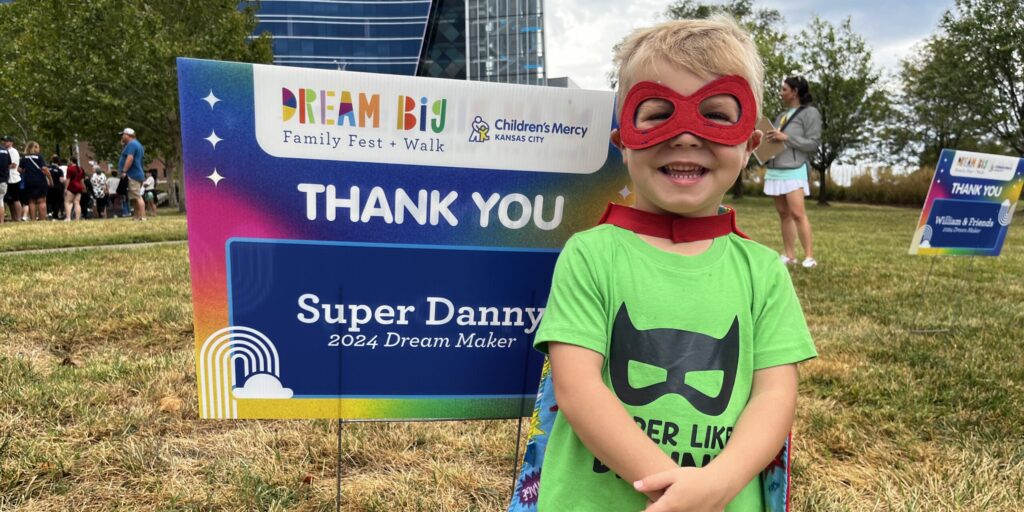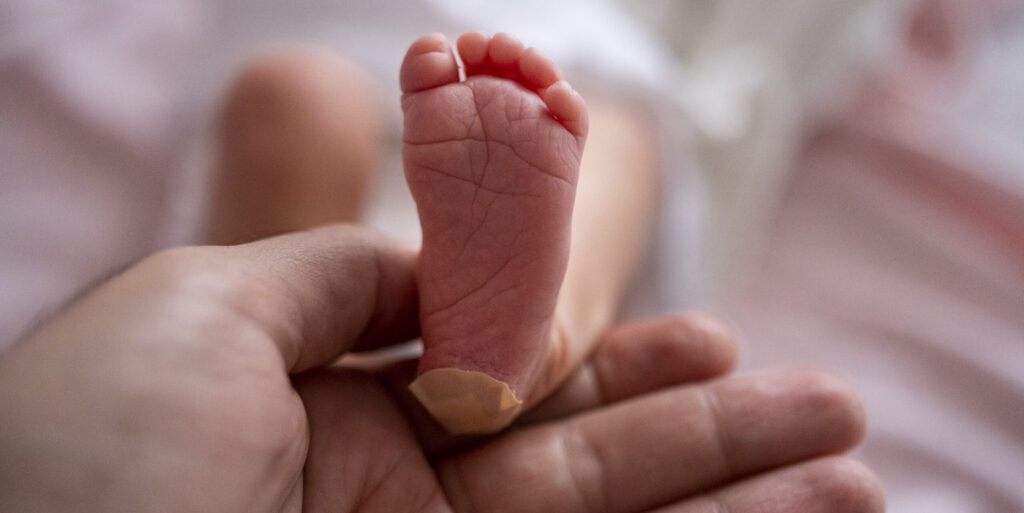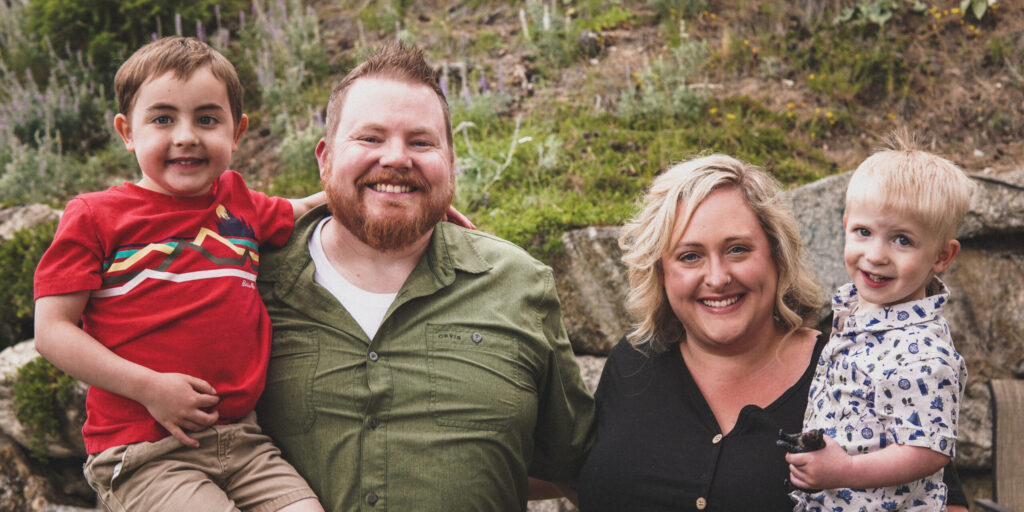
My Gene Therapy Journey: The Bafus Family
By Rebecca Hume | Tuesday, July 9, 2024
5 Second Summary
Gene therapies are increasingly available for muscular dystrophies and other neuromuscular diseases. My Gene Therapy Journey is a Quest Media series that gives members of the neuromuscular community a platform to share their experiences with gene therapies — both approved therapies and those in clinical trials — and provides essential information to help individuals and families make decisions about gene therapies.

Jada and Bryan Bafus
The Bafus family’s YouTube Channel started as a means to provide updates with close friends and family regarding their two sons’ Duchenne muscular dystrophy (DMD), but it has since evolved into a powerful platform to share their gene therapy journey – offering insight and support to other families. Bryan and Jada Bafus’s two sons, Mason (5) and Jack (2) were diagnosed with DMD in May 2023. One month later, the family learned of the recently approved, first-of-its-kind gene therapy treatment for boys living with DMD; and they embarked on a journey of research, hard decisions, navigating approval, accessing a new treatment, and, ultimately, hope.
Gathering information and making an important decision
On June 22, 2023, the US Food and Drug Administration (FDA) granted accelerated approval of ELEVIDYS (delandistrogene moxeparvovec-rokl), made available by Sarepta Therapeutics, for the treatment of ambulatory pediatric patients aged 4 through 5 years with DMD and a confirmed specific mutation in the DMD gene. In exciting news, in June of 2024, approval was expanded to include boys and men over the age of 4 years old. As the first gene therapy treatment for DMD, ELEVIDYS is designed to target the underlying cause of the disease with a one-time treatment that replaces the defective dystrophin gene. The announcement of this ground-breaking treatment brought hope to DMD families and the Bafus’s recognized that their older son’s diagnosis had come at an opportune time for treatment.
“We have kind of a unique story,” Jada Bafus says. “We had the privilege of flying to the PPMD Conference in Dallas, TX, in June of 2023, right after we had learned of the boys’ DMD diagnoses. While we were there, we were able to get the whole picture of gene therapy and this new treatment. Sarepta provided seminars and information, and Bryan and I began discussing the option for Mason.”
The Bafuses met with Dr. Henriquez, a neurologist at Seattle Children’s Hospital MDA Care Center, to learn more about ELEVIDYS. The neurologist explained how the therapy would produce the gene in Mason’s body and described the process as similar to a “gene transplant.” Noting how new the procedure was, the neurologist was also candid in sharing that there are still a lot of unknowns when it comes to gene therapy, including efficacy of outcomes and potential long-term effects.
“The doctors definitely under-promise and over-deliver,” Bryan says. “Because we don’t know the longevity of this gene therapy. Everyone is being optimistic, but also not giving false hope. This is the first gene therapy for DMD, which is a huge step, but we still don’t know what that all entails.”
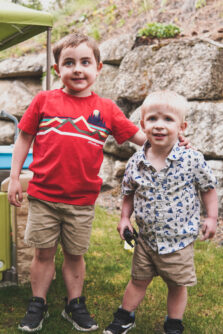
Mason and Jack Bafus
The unknown elements of the treatment can weigh heavily on parents tasked with the responsibility of making a decision of this magnitude for their child’s health. The Bafus’s navigated a juxtaposition of emotions (fear, confusion, excitement, hope, grief, and more) through conversation and prayer. While they were incredibly excited to have access to a new therapy right after obtaining their sons’ diagnoses, they were also still processing the recent diagnoses and only just beginning to understand and accept the new normal for their family. Ultimately, the timing provided a sense of peace to the parents, as they came to the decision together to move forward with treatment for Mason.
“We had a lot of major emotions all at once, so it was hard to make a clear decision based on those emotions,” Jada says. “Bryan had more hesitation and fear of the side effects and long-term effects, while I was more for it the whole time. I felt at peace with the timing of how it all came about, from diagnosis to gene therapy approval, and learning that Mason was a perfect candidate. Having the opportunity for him to walk longer and be stronger for a bit longer by getting that dystrophin, I was all for it and trusted that this opportunity was right for us.”
While their doctors also made it clear that gene therapy is not a cure, but instead a means to slow the progression and muscle breakdown to help children with DMD stay strong longer, the Bafus’s embarked on a new journey filled with hope.
Pursuing approvals for progressive treatment
Bryan and Jada sat down with Mason and discussed the treatment, explaining that it was an hour-long infusion that would help his muscles get stronger to make it easier to go up the stairs and jump and run. They also explained the process for determining eligibility to receive the gene therapy treatment. Mason was required to undergo multiple blood tests, to ensure that he did not already carry an antibody for the AAV virus that is used in the treatment. Because boys living with DMD can have a variety of different genetic footprints when it comes to exactly where the interruption in their DNA is located, he also required testing to confirm that his exon deletion or duplication was not located on the 8th or 9th exon. To be eligible for ELEVIDYS, patients must have the right mutation, be negative for antibodies, and be within the age range of 4 and 5 years old.
Mason met the eligibility requirements, and the Bafuses started the long process of obtaining insurance approval and treatment. As many families pursuing a newly approved therapy have experienced, there were some hurdles and frustrations to overcome along the way, with insurance denials and access to treatment sometimes delaying care.
“Overall, the insurance process took about six months, from start to finish,” Jada says. “We were immediately denied three times and had to go to an appeal process, where they finally agreed to cover treatment. Then we had to wait another 6 weeks after the initial approval for the insurance company and the Seattle Children’s hospital to come to an agreement and sign off.”

Mason became the third child in Washington State to receive ELEVIDYS.
The family recognized that the hospital providing care and the insurance policy to cover the infusion were both so new that there would naturally be some red tape to cut through. Bryan notes that there are a lot of kinks to work out but that their experience can also make the process smoother for families in the future.
“Mason was the third child living in Washington State to receive ELEVIDYS,” Bryan says. “There were no standard operating procedures in place and a lot of moving pieces that we had to go through. But the Seattle hospital dealt with most of the appeals process for us. The burden was not on us as a family, other than waiting…and planning.”
Planning and accessing care
The Bafus family lives five hours from the hospital where Mason would receive treatment. They ran into a few hurdles when completing labs and tests locally, due to the local lab’s unfamiliarity with the treatment, antibody test, and DMD in general. “I had to explain in detail to a lot of people every time, and that got redundant,” Jada shares. “The week leading up to the infusion, Mason had to go to the lab four or five time for more pokes… the antibody test wasn’t viable, he needed to do another, the neurologist from Seattle ordered basic labs a day later. The lab work wasn’t aligning to the point where we had to push our scheduled treatment date out one month.”
Changing the treatment date added additional hurdles for the family. Bryan had already coordinated with work to be out of the office for four weeks and had set up his leave and time off with HR, when the date changed, he needed to rearrange work plans and resubmit for FMLA. In addition to coordinating care for Jack while at the hospital with Mason, Jada and Bryan were also tasked with protecting Jack from the virus after Mason received his infusion. Jack will also be eligible for gene therapy when he comes of age and encountering the virus would threaten his eligibility, meaning the family had to keep Mason separate from Jack for four weeks after his treatment.
Arrangements were made, adjusted, and confirmed, and Mason traveled to Seattle to receive his infusion on January 24, 2024. The infusion itself was a one-day, out-patient procedure. Following his infusion, Mason and his parents needed to stay close to the hospital for two weeks until out of the “danger zone” for immediate serious side effects. The family them opted to stay an additional two weeks to protect Jack from the virus. Having connected with a Sarepta Gene Therapy Specialist early in their journey, the Bafuses received financial support for their trips to Seattle, including payment for their hotels and food. Sarepta paid for the Bafuses’ lodging for the two weeks, and they stayed with family for the second half of their time away. The boys’ grandparents created a home base for Jack, and Jada and Bryan took turns visiting. While it was challenging for the family to be apart for that month, they needed to be hypersensitive to Jack’s eligibility for future gene therapy.
Looking to the future
While an increase in Mason’s liver enzymes require additional monitoring with on-going lab tests that typically end after 12 weeks, he has not experienced other notable side effects. The treatment is expected to present a general slowing of progression and doctors advised the family that physical progress might not be noted until closer to six months after the infusion. As Mason approaches that six- month mark, Jada and Bryan share that they are starting to notice quite a bit of progress in Mason’s physical abilities.

Jack and Mason
“Mason is back in physical therapy now and we have seen a lot of progress with walking up-and-down the stairs more quickly and being able to use both legs to get upstairs; and progress with jumping and running endurance,” Jada says.
“He doesn’t fall or trip as much either,” Bryan adds. “Additionally, one of the first things we noticed was his mental clarity and articulation, he is able to communicate a little bit more. We noticed that first and then the stairs and being able to jump over a jump rope. We had never seen him do that before!”
While there isn’t clinical information available to support an increased mental clarity with gene therapy, Jada and Bryan both state that there has been a notable change. “He is processing things more clearly and more quickly,” Jada says. “It’s just our personal opinion, but it makes sense to me. The brain needs a certain percentage of dystrophin and now that he is producing a microprotein that he wasn’t getting before, I think that helps his mind process.”
The Bafuses are optimistic about the impact of gene therapy’s ability to decrease the progression of Mason’s DMD, providing more time to be a happy, healthy, and active kid. Bryan describes his five-year-old son as silly, out-going, loving, and clever. “Mason is very smart, very imaginative, loves people, loves helping people, loves joking with you and laughing,” Bryan says. “He is funny and full of life. He is well behaved. He is just a really sweet kid – it is unfortunate that he has had to endure DMD, but he has a positive outlook on life. He is a faithful, goofy kid – and he loves his brother.”
Advice for other families
Mason’s brother, Jack, is currently receiving EXONDYS, an exon skipping therapy, with plans to receive gene therapy treatment once he is old enough. Medical professionals have shared that patients can receive exon skipping and gene therapy at the same time, but current insurance policies do not permit funding for both. With insurance as the barrier in accessing dual treatments, Bryan advises other parents in his position to lean on multiple resources.
“The boys are on my employment insurance rights now and that has covered the expensive gene therapy treatment,” Bryan says. “But we have researched and learned that Mason is also eligible for Medicaid insurance through the state due to his disability – and state insurance would be able to pay for exon skipping.”
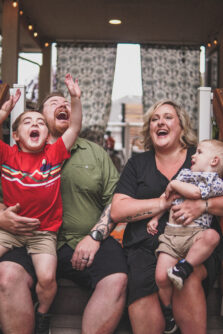
The Bafus family
The Bafuses share that connecting with other families, consulting with multiple professionals and experts in the field, attending conferences, and leaning on resources and research have helped them immensely throughout their gene therapy journey. Their YouTube channel provides a valuable outlet to connect virtually with other DMD families, build community, and share information.
“Connect with others and do plenty of research! Make sure you are doing the right research, asking the right questions with a neurologist. Get on the same page with your doctors, find the doctor that you want. It’s hard to make a decision for another human being, especially when you don’t know if you are making the right decision,” Jada says. “Research. Trust your gut. You will know what is right and good as parents. Pray or meditate about it. And trust your intuition – if you don’t feel like it’s right for your child, it’s not. But we don’t regret it, we do see progress and see it working.”
Next Steps and Useful Resources
- MDA’s Gene Therapy Support Network connects you to information, resources, and one-on-one support.
- Get the basics in MDA’s Virtual Learning webinar Gene Therapy 101.
- Watch a video about how MDA has led the way in gene therapy development research.
- Stay up-to-date on Quest content! Subscribe to Quest Magazine and Newsletter.
TAGS: Gene Therapy, Healthcare, MDA Care Centers, My Gene Therapy Journey, Parenting
TYPE: Blog Post
Disclaimer: No content on this site should ever be used as a substitute for direct medical advice from your doctor or other qualified clinician.



